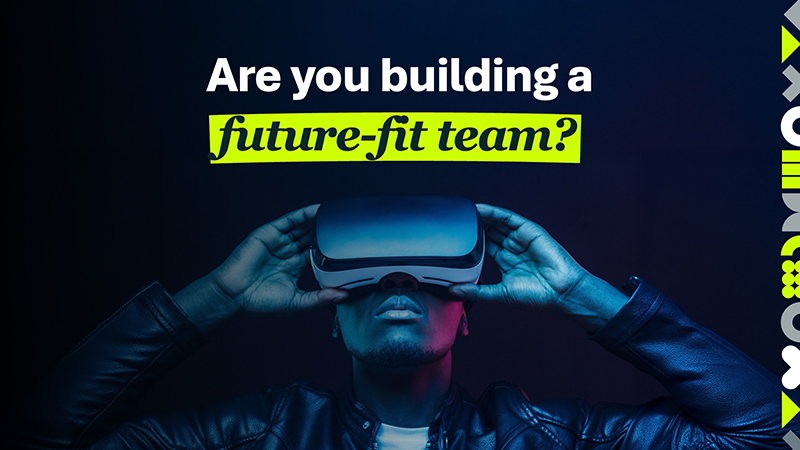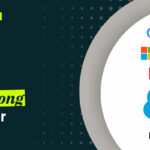A Framework for Future-Fit Marketing Teams
10 Sep 2025

By Roland Glass, Chief Commercial Officer
In the current economic climate, Chief Marketing Officers (CMOs) are faced with the challenge of making a meaningful impact with less resources than before. In organizations that previously boasted extensive in-house teams, the scale of this challenge is staggering. However, at HelloKindred, we have reframed this problem as a solvable “Rubik’s cube”. In the previous two articles in this series, I went into more detail about the challenges facing marketers and the new staffing and technology solutions that are available to address them. As I conclude this series, I will demonstrate how CMOs can use an interconnected approach to design aligned, impactful and agile marketing teams. Unsurprisingly, the secret ingredient to success lies in organizational culture.
Understanding the resource challenge
Future-fit CMOs are assessing what work needs doing, not just who needs hiring. This requires leaders to be purposeful about their operating model and resourcing strategy, rethinking skills, processes and systems simultaneously, rather than looking at each in isolation. Some of the key strategic questions include:
- What outputs are required?
- What skills do I need?
- What workflows will enable this?
- What systems and tools will level up and drive the functions value up the curve?
This way of thinking is highly relevant as leaders adjust to the impact of AI in the workforce. Much like in times such as the industrial age and other periods of general-purpose technologies, such as steam power, assembly lines, printing presses, and computers, AI is challenging us to retool our businesses and our processes. These technologies have increased global GDP over the past 100 years and have absorbed skills, but also initiated a period of skills adaptation. In reframing their current challenges, CMOs set the foundation to create a workforce that applies the right skills for a high-impact outcome.
Applying the Rubik’s Cube framework
HelloKindred uses a Rubik’s Cube matric to match resource challenges with relevant talent solutions. As I explored in the previous article of this series – How Leading CMOs Are Reshaping Their Teams to Deliver More With Less, this can include a variety of skills, from in house and hybrid, to remote offshore or nearshore hubs and automated capabilities. Each skill set has its benefits. One thing is for certain. The marketing industry has never been in a better position to create decentralized augmented teams where being effective, collaborating, changing culture and increasing creativity are at their highest.
It starts with culture
This approach is successful when leadership culture views all talent – regardless of the type of contract or location strategy – as a single team. If you see your team as an ecosystem or a network, rather than an organizational chart, the integration of all skills into systems, workflow and culture becomes the norm. It’s therefore critical to consider how welcoming and inclusive your environment is in accessing and developing your talent. Leaders should maintain an environment that fosters learning, assimilates work experience and facilitates skills transfer, for example. Ultimately, knowledge capital and human capital are part of one network. It’s equally important to have clear processes and ethical governance in place so that all resources, from distributed talent to AI, are able to confidently and clearly champion your brand.
Marketing leaders are entering a new frontier that is no longer constrained by differences in time and distance. We are no longer functioning in hierarchical organizations, even if the design appears to be one. Collaboration tools, dispersed teams and their leaders have transformed all workplaces into network structures.
In HelloKindred’s experience in building talent density, we have worked with our clients to establish principles for creating mentorship, fostering experience, cultivating a culture of learning, rotating roles, implementing reverse mentoring, forming peer-to-peer working groups to tackle specific problems, establishing forums, and creating cross-functional teams between tech and marketing. To set the culture and tone for the path forward, we often encourage leaders to drive a culture immersion with our near-shore and offshore client teams, where leaders visit from time to time and are on the ground.
From your first strategic steps to fresh outcomes
This series has discussed the reasons why CMOs need to reconfigure their talent, and has offered suggestions on different resourcing approaches that work. As I have discussed here, an organization’s marketing challenges and desired outcome set the foundation, and the organization’s culture sets the tone. A strong, inclusive and collaborative culture is a major indicator of success. In closing, here are some final tips to consider:
- Embrace difference and diversity: Create a culture that embraces marketing and creative talent differently. Build talent density and expand your talent pools. An FTE role in the office diminishes both. Creativity will come from a more expanded and inclusive team.
- Start with the end in mind: You don’t always have to start with a transformation project – it’s hard to build the plane while it’s flying. Articulate the future state – what organization do I need to serve, what are the M&C impact factors, what model suits this, what skills do I need, look at the outputs, not the head count.
- Resource in careful increments: Focus on one role or one special project at a time, and then you can time test what is going to work for your organization. Zero blunt tools and only sharp instruments in skills and systems.
- Prioritize agility: Don’t build structures that are overly rigid and expensive to pivot. Go with flexible and agile approaches so that you can change direction, increase or decrease capacity, and rapidly scale up or down on bookmarked projects that require a specialist tactical team or agency service.
In conclusion, while CMOs are being asked to do more with less, an approach that focuses on talent density gives them access to more – more skills, more insight, more diversity and more innovation.
To read the first two articles of this series, consider reviewing “How Leading CMOs Are Reshaping Their Teams to Deliver More With Less” and “Why the Old Marketing Team Model No Longer Works“




